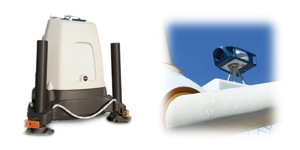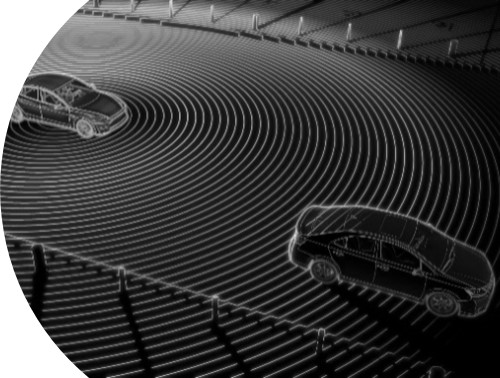Exploring LIDAR, Part I
LIDAR has gained popularity and led to numerous advancements in the sensing and metrology industry for measuring distances and velocity. The principle of operation is based on sending out a probing light signal and detecting and interpreting the signal reflected from various objects.

LIDAR technology has facilitated progress in various emerging applications, opening up new industries and markets:
In the field of wind energy, LIDAR serves as the ideal instrument for prospecting future wind farm sites to evaluate and optimize economically sustainable energy production. Integrating LIDAR with wind turbines helps detect turbulence and gusts, thereby increasing energy production and preventing turbine stress and damage.

- LIDAR in atmospheric metrology aids in the detection of wind patterns, pollution, and various contaminants. Measurements of air vortexes and turbulence contribute to enhancing safety during meteorological emergencies.
Automotive LIDAR has become increasingly popular and is already playing a significant role in improving transportation safety. Ongoing improvements promise to enable safe autonomous operation.

- In aerospace, LIDAR is successfully employed for scientific and military purposes, such as range and speed detection for spacecraft landing, proximity detection, and navigation to ensure safe connections and docking in space. Other applications include helicopter landings in low-visibility conditions caused by snow or dust storms and maintaining safe distances in busy air traffic environments.
LIDAR, in general, operates based on two fundamental principles:
- Time-of-flight (TOF): This method involves emitting a short pulse of light and measuring the timing of the reflected signal.
- Coherent Doppler LIDAR (CDL): Utilizes continuous wave (CW), pulsed, or chirped light and detects wavelength shifts due to the Doppler effect in the reflected signal.
While TOF is an older and more cost-effective technology, CDL offers significant advantages in terms of precision, fast measurement, high resolution, immunity from noise, sunlight, and interference with other light sources. CDL includes earlier versions in both CW and pulsed configurations, offering cost-performance trade-offs suitable for various applications. The new version of FMCW LIDAR utilizes a chirped laser signal, combining the advantages of CW and pulsed CDL options, offering optimal performance and features simultaneously.
CDL requires single-frequency laser sources to operate correctly, with key requirements including:
- Narrow linewidth/long coherence length
- Low Relative Intensity Noise (RIN)
- High stability and reliability
- Frequency modulation capabilities for FMCW LIDARs
Naturally, LIDAR developers aim to leverage commercially available semiconductor lasers initially designed for Telecom/Datacom applications to benefit from their wide availability and relatively low cost. However, Telecom-grade lasers have limitations, including limited coherence length and high frequency noise. Utilizing these lasers compels LIDAR developers to constrain performance parameters and develop complex receivers and optical transmission solutions to mitigate the limitations of laser performance.
Next week we’ll look at how RIO Lasers’ PLANEX and ORION narrow linewidth technology and products allows developers to avoid these performance limitations with improved efficiency and increased reliability.